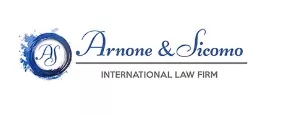- within Transport topic(s)
- within Intellectual Property, Real Estate and Construction and Insurance topic(s)
Importation of Non-EU Aircraft into Europe: Customs Formalities on Entry and Import into the European Union
The European Union considers aircraft registered in third countries (non-EU) as "foreign goods." Therefore, in order to circulate freely within Europe beyond the maximum permitted period, such aircraft are subject to certain formalities, including the payment of VAT and customs duties.
An aircraft registered in a non-EU country may enter the customs territory of the European Union under the temporary admission regime.
This regime allows the owner to use the aircraft in Europe without having to immediately pay customs duties and VAT, provided that certain conditions are respected.
Importation of Non-EU Aircraft into Europe: How Does Temporary Admission Work?
Temporary admission of private non-EU aircraft in Europe is governed by very specific customs regulations.
Once an aircraft arrives in the EU, it is automatically placed under the temporary admission regime. This means it may operate freely within the European territory, exempt from VAT and customs duties, as long as the following conditions are met:
- The aircraft may not remain in the EU for more than six months within a twelve-month period.
- The aircraft must be owned by a non-EU resident (who does not stay in the EU for more than 180 days) and used by a person who is also not a resident of Europe.
- The aircraft must be used for private, non-commercial purposes.
In general, temporary admission is only available for private aircraft, not for aircraft used for commercial purposes within the EU.
In specific circumstances this period may be extended up to 18 months, but such exceptions require authorizations and supporting documentation.
The calculation of the period begins when the aircraft enters the customs territory of the Union (for example, when landing at a European airport from a third country).
Importation of Non-EU Aircraft into Europe: How Do I Import an Aircraft?
Owners of non-EU aircraft may voluntarily choose to import their aircraft into Europe.
An aircraft is considered fully imported into the EU once it has been brought into a specific EU Member State and the owner has paid all applicable customs duties and VAT in that country. VAT rates and customs duties vary among EU Member States, but generally range between 15% and 25% of the aircraft's value.
EU sanctions related to the importation and admission of non-EU aircraft
If the non-EU aircraft remains in Europe beyond the permitted period, the temporary admission regime expires and the aircraft is deemed illegally imported.
The consequences can be extremely serious:
- Full payment of customs duties and VAT on the entire value of the aircraft;
- Administrative penalties for violation of customs regulations;
- Seizure of the aircraft by customs authorities;
- Criminal charges for customs smuggling.
Importation of Non-EU Aircraft into Europe: How Can We Help You?
The law firm Arnone & Sicomo has a team of professionals, including lawyers and consultants, capable of assisting foreigners whose private jet has been seized.
We are aware of how complex customs law can be for those outside the sector, and we strive to advise our clients in the best possible way to avoid unpleasant situations.
Relying on customs lawyers specialized in non-EU aircraft importation is essential when deciding to travel through Europe with your private aircraft.
Exceeding the maximum permitted period entails significant economic and legal risks for owners, as seen above. It is therefore crucial to carefully plan the entry and stay of your jet within the Union, relying on professionals who can ensure full compliance with European customs regulations.
The content of this article is intended to provide a general guide to the subject matter. Specialist advice should be sought about your specific circumstances.


